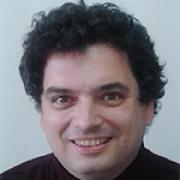אני חוקר של צרפת בעת החדשה המוקדמת, ובעיקר במאה השבע עשרה ה"ארוכה" (1750-1550). העבודה שלי עוסקת ביחסים בין ספרות, מדע, ומוסדות חברתיים בתקופה, מזוויות שונות: ספרי הראשון עוסק בהיסטוריה של משפחת פרו (Perrault), משפחה של סופרים ומלומדים שפעלה בפריז של המאה השבע עשרה. כיום, הם מוכרים לציבור בעיקר בזכות שרל פרו, מחברן של הגרסאות המוכרות של סיפורי מעשיות כגון "סינדרלה" או "החתול במגפיים", אבל למעשה, שרל ואחיו היו מעורבים בהיבטים רבים של המהפכה התרבותית של המאה השבע עשרה, מהמהפכה המדעית ועד לייסודן של אקדמיות חדשות, בחסות מלכותיות. לוז הספר הוא האופן שבו תפקדה המשפחה כמוסד אינטלקטואלי ותרבותי במאה השבע עשרה, אולם ההתחקות אחר עקבותיהם של בני המשפחה אפשרה לי גם לבחון מחדש מוסדות מוכרים כגון החצר בוורסאי או הסלונים. במקביל, אני מפתח פרויקט ארוך טווח המתעד את האופן שבו שדה הספרות המתפתח בצרפת של העת החדשה המוקדמת עיצב צורות חדשות של ידע מדעי. אני מתמקד כעת במיוחד בעבודותיו של סבסטיאן לה קלר (Le Clerc), יוצר התחריטים הידוע ביותר בצרפת של לואי הארבעה עשר, ובעיקר בחיבוריו המדעיים, המאפשרים לבחון מחדש את סוגיית היחסים בין מלומדים לבעלי מלאכה בעת החדשה המוקדמת.
I study the history of Early Modern France, especially during the “long” seventeenth century (c. 1550-1750). My work elucidates the relations among literature, science, and social institutions: my first book does so through the history of the Perrault family of authors and scholars, who were active in seventeenth-century Paris. Today, the Perraults are known mostly thanks to Charles Perrault’s version of the Mother Goose tales, such as “Cinderella” or “Puss in Boots.” While the tales can seem like a frivolous pastime, Charles and his brothers were in fact deeply involved in the cultural revolution of the seventeenth century; they took part in the Scientific Revolution, in the foundation of formal, state-sponsored academies, and in the theological quarrels surrounding Jansenism. The core of the book revolves around the family’s role as an intellectual and cultural institution in the seventeenth century, but tracing the careers and fortunes of the Perrault brothers opens new vistas on the functioning of more familiar ones, such as the court at Versailles or the salons. I am also working on a long-term project documenting the effects of the emergent early modern literary field shaped new forms of scientific knowledge. At present, I am especially focused on the work of Sébastien Le Clerc, the most famous engraver in Louis XIV’s France, and on his scientific publications. Le Clerc’s engagement as an author with pressing scientific problems would shed new light on the relations between artisans and scholars in the early modern era.


